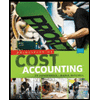14. Assume that Sweeten Company used cost-plus pricing (and a markup percentage of 80% of total manufacturing cost) to establish selling prices for all of its jobs. What selling price would the company have established for Jobs P and Q? What are the selling prices for both jobs when stated on a per unit basis assuming 20 units were produced for Job P and 30 units were produced for Job Q? (Do not round intermediate calculations. Round your final answer to nearest whole dollar.) Total price for the job Selling price per unit Job P Job Q
14. Assume that Sweeten Company used cost-plus pricing (and a markup percentage of 80% of total manufacturing cost) to establish selling prices for all of its jobs. What selling price would the company have established for Jobs P and Q? What are the selling prices for both jobs when stated on a per unit basis assuming 20 units were produced for Job P and 30 units were produced for Job Q? (Do not round intermediate calculations. Round your final answer to nearest whole dollar.) Total price for the job Selling price per unit Job P Job Q
Principles of Cost Accounting
17th Edition
ISBN:9781305087408
Author:Edward J. Vanderbeck, Maria R. Mitchell
Publisher:Edward J. Vanderbeck, Maria R. Mitchell
Chapter2: Accounting For Materials
Section: Chapter Questions
Problem 10P
Related questions
Question
4

Transcribed Image Text:14. Assume that Sweeten Company used cost-plus pricing (and a markup percentage of 80% of total manufacturing cost) to establish
selling prices for all of its jobs. What selling price would the company have established for Jobs P and Q? What are the selling prices
for both jobs when stated on a per unit basis assuming 20 units were produced for Job P and 30 units were produced for Job Q? (Do
not round intermediate calculations. Round your final answer to nearest whole dollar.)
Total price for the job
Selling price per unit
Job P
Job Q
![Required information
The Foundational 15 (LO2-1, LO2-2, LO2-3, LO2-4]
[The following information applies to the questions displayed below.]
Sweeten Company had no jobs in progress at the beginning of March and no beginning inventories. The company has
two manufacturing departments-Molding and Fabrication. It started, completed, and sold only two jobs during March-
Job P and Job Q. The following additional information is available for the company as a whole and for Jobs P and Q (all
data and questions relate to the month of March):
Estimated total machine-hours used
Estimated total fixed manufacturing overhead
Estimated variable manufacturing overhead per machine-hour
Direct materials
Direct labor cost
Actual machine-hours used:
Molding
Fabrication
Total
Job P
$33,000
$37,000
3,700
2,600
6,300
Job Q
$18,000
$15,500
2,800
2,900
5,700
Molding Fabrication Total
2,500
1,500
4,000
$33,000
$15,000
$18,000
$ 3.40 $4.20.
Sweeten Company had no underapplied or overapplied manufacturing overhead costs during the month.
Required:
For questions 1-8, assume that Sweeten Company uses a plantwide predetermined overhead rate with machine-hours as
the allocation base. For questions 9-15, assume that the company uses departmental predetermined overhead rates with
machine-hours as the allocation base in both departments.](/v2/_next/image?url=https%3A%2F%2Fcontent.bartleby.com%2Fqna-images%2Fquestion%2F1c36d334-d677-4a5a-b7b0-2a7b69cecd25%2Ff50a2b8e-1979-480c-a86f-a3fa02d090ac%2Fnxg31e5_processed.jpeg&w=3840&q=75)
Transcribed Image Text:Required information
The Foundational 15 (LO2-1, LO2-2, LO2-3, LO2-4]
[The following information applies to the questions displayed below.]
Sweeten Company had no jobs in progress at the beginning of March and no beginning inventories. The company has
two manufacturing departments-Molding and Fabrication. It started, completed, and sold only two jobs during March-
Job P and Job Q. The following additional information is available for the company as a whole and for Jobs P and Q (all
data and questions relate to the month of March):
Estimated total machine-hours used
Estimated total fixed manufacturing overhead
Estimated variable manufacturing overhead per machine-hour
Direct materials
Direct labor cost
Actual machine-hours used:
Molding
Fabrication
Total
Job P
$33,000
$37,000
3,700
2,600
6,300
Job Q
$18,000
$15,500
2,800
2,900
5,700
Molding Fabrication Total
2,500
1,500
4,000
$33,000
$15,000
$18,000
$ 3.40 $4.20.
Sweeten Company had no underapplied or overapplied manufacturing overhead costs during the month.
Required:
For questions 1-8, assume that Sweeten Company uses a plantwide predetermined overhead rate with machine-hours as
the allocation base. For questions 9-15, assume that the company uses departmental predetermined overhead rates with
machine-hours as the allocation base in both departments.
Expert Solution
This question has been solved!
Explore an expertly crafted, step-by-step solution for a thorough understanding of key concepts.
This is a popular solution!
Trending now
This is a popular solution!
Step by step
Solved in 3 steps

Recommended textbooks for you

Principles of Cost Accounting
Accounting
ISBN:
9781305087408
Author:
Edward J. Vanderbeck, Maria R. Mitchell
Publisher:
Cengage Learning

Principles of Cost Accounting
Accounting
ISBN:
9781305087408
Author:
Edward J. Vanderbeck, Maria R. Mitchell
Publisher:
Cengage Learning